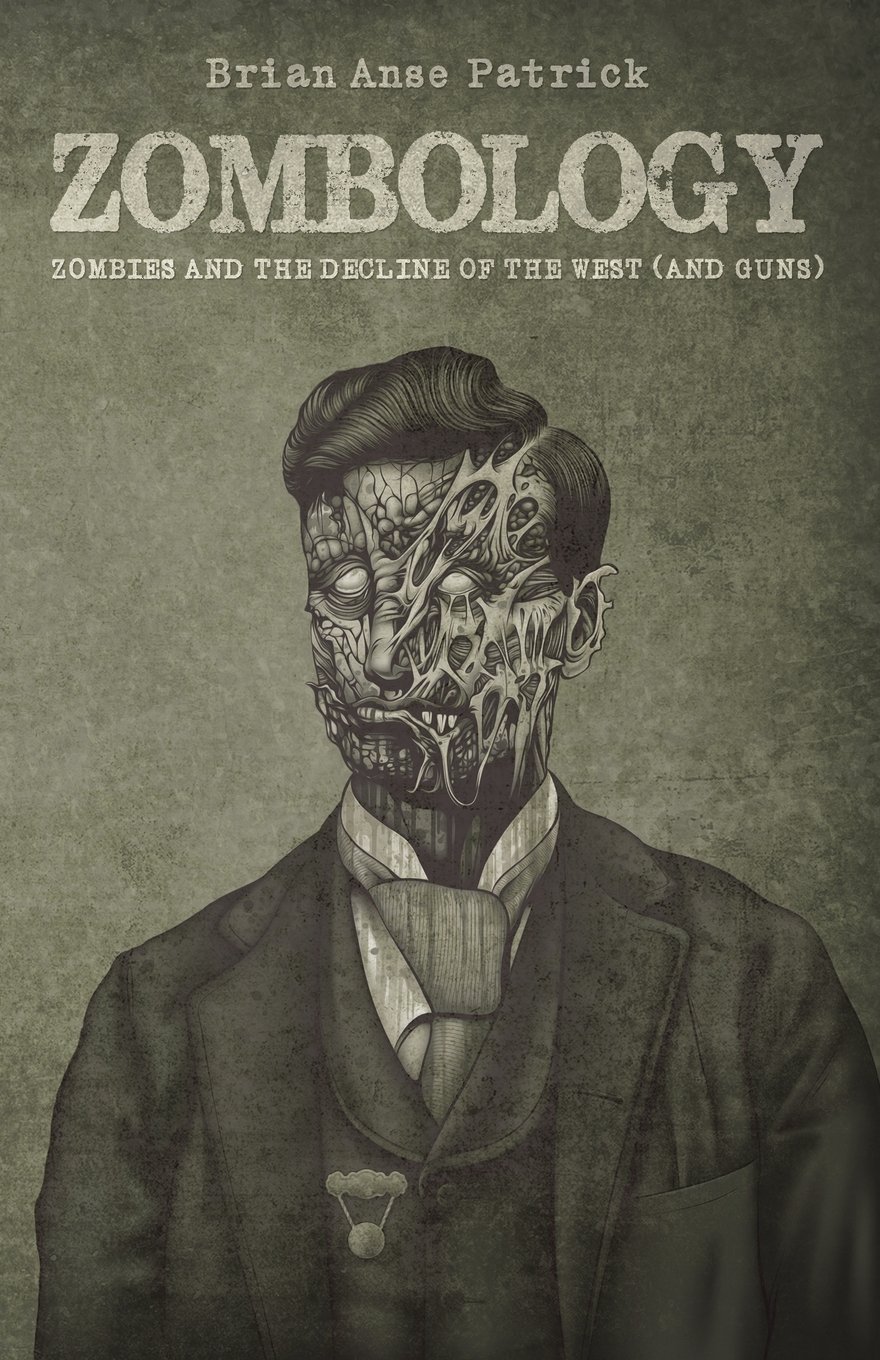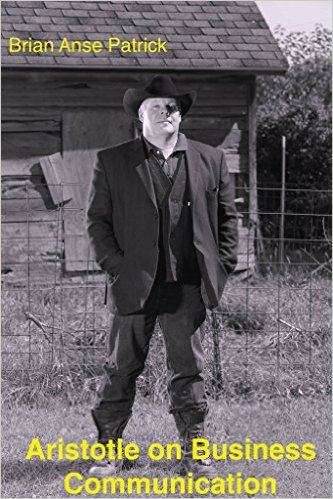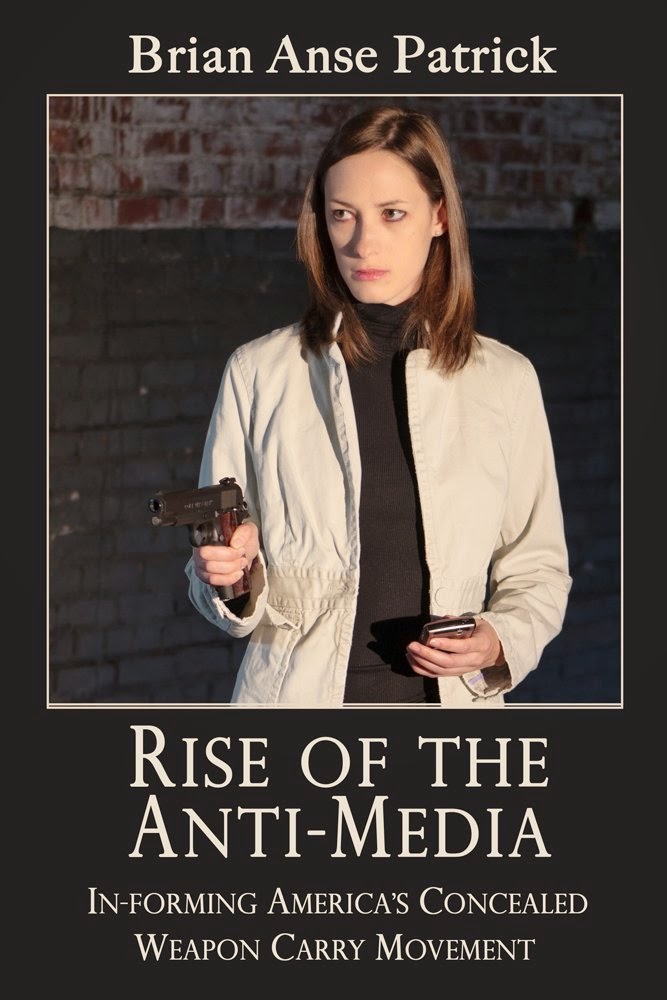Friday, October 31, 2014
Second Edition of Rise of Anti-Media by Professor Brian Anse Patrick in Print
The new affordable print version will be available on Amazon very soon. This 2014 edition also contains a new foreword by the author.
Tuesday, October 7, 2014
Negroes and the Gun: American Gun and Book Review
American Book and Gun Review
by
Professor
Brian Anse Patrick
University
of Toledo
Negroes and the Gun: The Black
Tradition of Arms. Nicholas Johnson, Amherst, New York: Prometheus Books,
379 pages, 2014.
In response to a nonviolent civil
rights worker who was surprised to see a firearm in the house of a well known black
southern civil rights activist, the activist explained, “That’s a non-violent
gun.”
This is one of scores of telling incidents
and historical events documented by Professor Nicholas Johnson as he traces the
American black tradition of gun ownership from its painful beginnings in slave
days, through the Reconstruction and Jim Crow eras, the black diaspora to the
industrial north, to the Civil Rights movement and on into the present.
The black tradition of arms is a
neglected and, to some, perhaps, an inconvenient history. Although many will find
it inspiring, modern progressives will probably wish to swish it away because
it doesn’t align with their characteristic approach to social regulation, i.e.,
“We the government/elite will save you.” The progressive social cartoon poises
black people as victims of the gun rather than proponents of the gun for
personal defense and freedom. But history as revealed by Johnson says
otherwise. American Blacks by necessity took up arms. They used them often and
responsibly, and the presence of guns in black hands averted more violence than
it caused, although as always the gun is a tool as well as a symbol, and taking
up a gun can cause unforeseen (but not unforeseeable) problems.
Frederick Douglass counseled, “A
good revolver, a steady hand and a determination to shoot,” as a way for former
slaves to counter the man-hunters who attempted to seize blacks who had escaped
to the North. Free state blacks often resisted and repelled incursions of
slavers who came to reclaim what was then legally viewed as lost property. Armed
groups of black men assembled at times to interdict slavers. Harriet Tubman of
Underground Railroad fame was well known for carrying firearms and is often
depicted rifle in hand. Many white
southerners could not abide the idea of armed, independent black voters. This too
much resembled true citizenship. After the Civil War when southern militias and
nightriders attempted to disarm blacks, many of whom had been federal soldiers,
there was often armed resistance. The subsequently adopted 14th
Amendment attempted to assure that the rights, immunities and privileges of
citizenship as guaranteed by the U.S. Constitution also applied to the residents
of the various American states, especially the new black citizens. Amazingly,
in recent times in Chicago, the 14th Amendment had to be invoked
once again in defense of the 2nd Amendment, a battle refought in a
manner of speaking, in McDonald v Chicago,
where a black man, the late Otis McDonald, had to go to all the way to the
Supreme court to plead his right to own a gun in the city of Chicago. McDonald
won. But Chicago, much like the southern Democrats of the Reconstruction Era,
is still spending taxpayer money to impede the 2nd Amendment rights of
good citizens. And as Johnson makes
clear, there is also no doubt that many gun control laws of the last
century-and-a-half were largely aimed at blacks.
And back in the Reconstruction Era South,
the 14th Amendment, lawful authorities and the federal system were
often a long way away, especially at night in the countryside. And as some of accounts documented by Johnson
reveal, when blacks resisted armed terrorists, it sometimes it turned out after
the sun rose that the bloodied attackers left behind were in fact the local
authorities—sheriffs and deputies.
Violence was often lopsided. Early on in the days of the Underground Railroad
blacks generally had only single shot weapons while the slavers tended to have
the more modern repeating weapons. After the Emancipation and the War, blacks sometimes
won, sometimes lost and often hung on, maintaining a sort of stasis made
possible by the potential for defensive gun use. Armed blacks could not be
attacked with impunity.
The storied NAACP enters the
picture as a major player in legal cases involving armed self-defense by blacks,
defending (unsuccessfully) WWI veteran Sgt. Edgar Caldwell for using his
service revolver to kill a train conductor and wound a motorman who had been
trying to stomp him to death after he resisted being thrown out of the white passenger
section. Johnson presents more cases
than can be recounted here, some virtually municipal in scale. In Elaine,
Arkansas a white deputy was shot dead after he fired into a group of Negro
farmers, veterans, who had formed a farmers union. In the ensuing violence, the
governor mobilized troops, deputies roamed the countryside, resulting in 5
white and 25 black casualties. Murder indictments in the “scores” for the blacks
were followed by kangaroo trials, some only an hour long. Eventually, with NAACP help, at the SCOTUS
level of appeal the convictions were reversed. Justice Holmes justified the
reversal on the grounds that the trials were merely an extension of mob
violence. In Detroit, NAACP brought famous litigator Clarence Darrow into the
Ossian Sweet case. Sweet, a dentist, along with friends and relatives, had been
indicted for murder after a white mob attacked the house that he had purchased
in an all white neighborhood on Detroit’s east side. Threats had been made and
Sweet and friends armed themselves.
Shots were fired and afterward a white man lay dead. The prosecutor’s
office tried to present the case as incidence of armed Negroes firing on a
peaceful community. In court, Darrow pointed out that prosecutors had called up
a mob of eyewitnesses to testify there was no mob outside the house. After an
initial mistrial Sweet was eventually acquitted. A compliment to Johnson as a scholar, being
myself very interested in 2nd Amendment issues and having published
extensively in this field, I had thought myself quite well acquainted with the
Sweet case, but in this book I learned much more.
Of course the big problem to NAACP
and black community leaders was balancing a non-violent political movement with
the needs of personal home and self-defense. Non-violence wasn’t an effective
political tactic for the dead. But neither was retaliatory violence good for
the movement. The notion of armed aggressive black freedom fighters was more
than enough to incite an unwinnable race war, and at the least could reverse
progress and good will hard earned over the years. Hence the public commitment
of Civil Rights Movement leadership to non-violence while privately their homes
and sometimes their persons bristled with guns. It was a balancing act between
political symbolism and survival. A movement of armed black men known as the
Deacons protected non-violent marchers and the homes of community and movement leaders,
all as unobtrusively as possible. When during the era of the Black Panthers,
the Deacons and other organizational sympathizers morphed into a more militant
movement, the checkbooks of northern white liberals closed to them, and support
went to more moderate non-violent leaders.
In a time of threats, church
bombings and burnings, Martin Luther King applied for a concealed carry permit and
was turned down on the grounds that he had not demonstrated need. This is how
the old unreformed “may issue” concealed carry licensing boards worked—back
when boards had total discretionary power, the concealed carry permit became a
boon granted to friends, cronies and brother-in- laws. Still, King was uneasy
about the political ramifications of guns, so he stressed a low profile for his
armed protectors. Another civil rights activist packed her gun in a paper bag
everywhere she went, people thought it contained her lunch. Activists are quoted as stating that non
violent or not, there were guns everywhere in the homes of movement leaders and
members.
Back in the 19th Century,
journalist/social commentator and provocative black essayist Ida B. Wells
wrote: “The Winchester rifle should have a place of honor in every black home.
The more the Afro-American yields and cringes and begs, the more he is
insulted, outraged and lynched.”
Unlike most professors Johnson
knows whereof he writes when it comes to firearms. In an apt analogy he shows
that the Winchester repeating level action rifle was the “assault weapon” of
its time, being capable of a high rate of fire and easily reloadable. I know from personal conversations with
Professor Johnson in the context of academic conferences (e.g., last year’s
Second Amendment Symposium at Fordham Law School on that island of antigun
sentiment known as Manhattan) that he owns and delights in an old Winchester
.351 caliber rifle from 1907 or so. He
enjoys showing antigun academic acquaintances that the idea of a semiautomatic
so-called assault rifle has been around for a long time, and is not some new
satanic invention causing havoc on society, but has long been part of the
healthy social order. In the same way the Winchester rifle became a useful,
freedom-preserving part of the emergent social order of the South, the Black
tradition of arms. I may be attributing my own construal of meaning to
Professor Johnson’s work here, if so I apologize, but you, dear reader, will
get the idea. My point is that Johnson is not one of the hoplophobic hysterics
that one encounters so frequently in academia. He is knowledgeable; his
language is restrained, objective; his interpretations buoyed by an abundance
of facts, documentation and experience.
Johnson’s book is extremely well
researched. A Professor at Fordham Law School, Johnson’s scholarship is
carefully anchored in citations. The depth of the research is impressive. This
is not the sort of book that one takes in at a sitting. Its chapters and
organization lend themselves well to episodic reading, however. Overall, though, one thing becomes certain: a
commitment to non-violent political means and peace does not equate with lying
down and dying when it comes to matters of self, life, home and family. Defense
of home hearth and family is the opposite of violence.
Johnson’s last chapter is especially
impressive. He faces down many of the current progressive objections and myths concerning
guns in private hands, even looking at the troubling differences between black
and white homicide/victimizations.
Recent and early 20th century victimization and crime studies
show rates of blacks as victims and perpetrators at 10 times (or more) higher
than the white population. Modern
academics and journalists tend blame this on the NRA and evil gun manufacturers.
Johnson more rationally attributes the
disproportion to a criminal “microculture,” even quoting W.E.B. Dubois on the
subject. One of the big negative effects of unjust, broadly sweeping gun
legislation is that it makes it difficult or impossible for blacks to defend
themselves against this criminal microculture, the promise of imminence/omnipotence
of the progressive state, being so much nonsense. The police or the state
cannot defend: they can only appear after the fact. We should recall the reason that Otis
McDonald was forced to go to law was so he could effectively defend self and
family against Chicago gangs in his own home and city.
Also dealt with and dismissed is
the myth that guns in the home are more of a risk to the home owner than to invaders,
a much cited myth based on a lopsided study based on bad sampling and
comparisons published in the consistently hoplophobic New England Journal of Medicine.
Johnson also dispels the common myth that high numbers of guns are
correlated with high levels of gun violence, showing that the amazing increases
in gun ownership and owners in recent years have not correlated with increases
in crime, quite the reverse. He sheds light on DGUs (Defensive Gun Uses), using
a variety of survey sources, that show most gun uses are non-violent, good
citizens use guns to deter but not to shoot social predators. Johnson attributes current
antigun policies of black urban leaders to political alliances with
progressives, who provide a great many incentives and blandishments to black
communities in exchange for what are regarded as reliable voting blocks for
progressive causes. He cites survey
information that suggests current blacks are not as antigun as some imagine,
providing guns go to good people.
A final anecdote, not from Johnson’s
book, but which suggests some reasons for the disappearance of the black
tradition of arms under an educational and informational system dominated by modern
so-called progressive values. A professor
and lawyer of my acquaintance, a black man, well educated and urbane, fairly
affluent, returned recently with his family to Atlanta to set in order the
effects and property of his recently deceased grandfather. In the home in a
drawer by the old man’s bed they discovered a revolver in a box along with
ammunition. It should be mentioned Atlanta had been, long ago, the scene of one
of the race riots discussed in Johnson’s book, wherein many blacks armed themselves
to resist attackers. My acquaintance and his family were terrified and alarmed by
the gun and worried that it would go off or harm them in some way. They placed
the box with the gun in a plastic garbage bag and put it in the trashcan behind
the house, and called police. The police
removed the gun. A few hours later, it
must have been a nice revolver with an unsullied history, a police officer came
back with a waiver the professor could sign transferring the gun to the officer
personally. The professor did. So the revolver
wasn’t wastefully destroyed. The
moral? You see here what progressive
propaganda can achieve in a generation or so. An item of utility, a means of
freedom from terror and coercion, an heirloom, was transformed into a symbol of
death and evil. As you can imagine, Dear Reader, Johnson’s account will not be
well received in some circles because it says things that for some are unthinkable.
Johnson’s book is a blow against
Orwellian history. A fine and
illuminating book it is!
BAP
7 October 2014
Subscribe to:
Posts (Atom)







